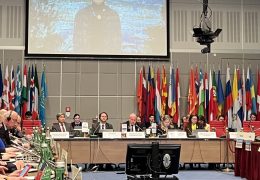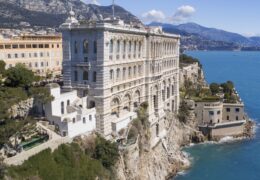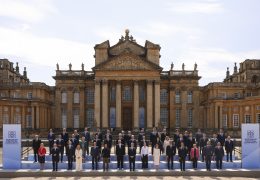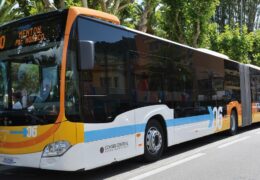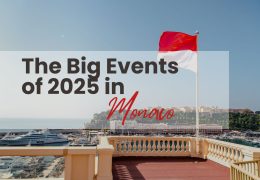Celebrations of the 80th Anniversary of the Liberation of Monaco
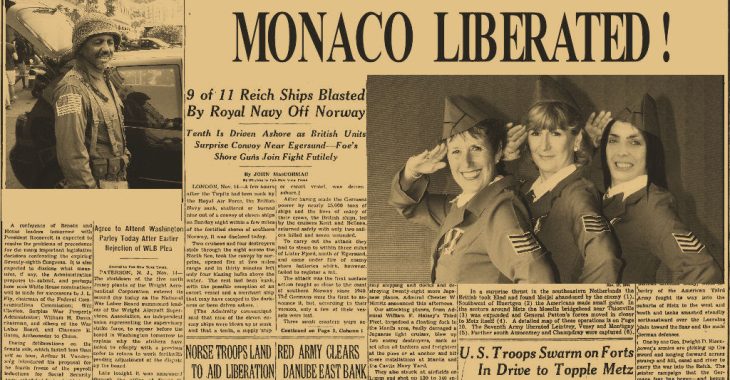
« Monsignor,
Monsignor the Archbishop,
Mr. President of the National Council,
Ladies and Gentlemen, high representatives of the Sovereign House and Justice,
Ladies and Gentlemen, Government Ministers,
Mr. Ambassador of France,
Madam Ambassador of the United States of America,
Mr. Mayor of Monaco,
Ladies and Gentlemen, representatives of the National Council and the Municipal Council,
Mr. Bradford HICKS,
Mr. Mayor of Beausoleil,
Ladies and Gentlemen in your titles and capacities,
I am particularly honored to speak publicly for the first time before you, Monsignor, before all of you as Minister of State of the Principality of Monaco.
I fully appreciate the trust you have placed in me, Monsignor, by appointing me to this position.
I am honored, and I want to say here that I will put all my determination and energy at your service, at the service of the Sovereign Prince, at the service of this beautiful Country in which I now have the fortune to serve.
Allow me to add that I have known Monaco for many years and that I always feel a strong sense of admiration for this State and its population.
The History of the Principality has been built, over the centuries, thanks to the vision of its sovereigns, in a constant effort of work and adaptation to the changes of the surrounding world.
Monsignor, during your accession speech, you said, in particular, that you had a dream.
« I had a dream », you said.
That Monaco be a country producing models:
• Model of life
• Model of development
• Model of well-being
• Model of peace
Monaco’s power must be an ethical power, a model power.
This is Monaco, and rest assured that I will be its guarantor by your side.
But what is most admirable is the unbreakable bond between the Grimaldi Dynasty and this population, despite the ups and downs and sufferings of History that have so often tied the destinies of France and Monaco.
Without the continuity of this dynasty, Monaco would no longer be what it is.
The recognition and power of His Serene Highness Prince Albert II, in Europe and the world, no longer need to be proven.
You have just solemnly recalled, Monsignor, on the occasion of a moving national ceremony in front of the war memorial at the cemetery, your will to officially commemorate the 80th anniversary of the Liberation of Monaco in 1944.
You yourself, Monsignor, participated, at the invitation of the President of the French Republic, along with many heads of state and government of the countries involved in this historic moment, in the commemorations of the Normandy landing on June 6, and then in those of the Provence landing on August 15.
The day before, my predecessor Pierre DARTOUT participated in the unveiling of a bronze statue of General FREDERICK, partly financed by the Monegasque State, in La Motte, in the Var, at the site where the First Airborne Task Force, which he commanded, was air-dropped on the night of August 14-15, 1944.
Because, as you reminded us a few moments ago at the cemetery, Monsignor, it was the troops of this American general who allowed the liberation of Monaco on September 3.
According to the wish of Your Serene Highness, I now have the honor of welcoming you to inaugurate, in the hall of the Ministry of State, the exhibition Monaco liberated! September 3 – December 28, 1944, organized jointly by the Mission of Prefiguration of the National Archives, the Archives of the Palace, and the Audiovisual Institute.
The curatorship was carried out by the directors of these institutions, whose fine work, particularly in the area of enhancing the historical ties that bring Monaco closer to several French local authorities, I am already partially familiar with, as a former elected representative of the Drôme.
Michaël BLOCHE, Thomas FOUILLERON, and Vincent VATRICAN worked with Stéphane LAMOTTE, associate professor at Lycée Albert I, with the assistance of Jean-Charles CURAU, staff from the municipal Mediatheque, and the Central Service of Archives and Administrative Documentation.
They should be thanked and congratulated for the remarkable result of their work, which is presented with great talent, thanks to an infographic that is both dense and elegant.
Unprecedented in its approach and methodology, this exhibition covers a period of just over 4 months, from the Provence landing on August 15, 1944, to the dissolution of the Monaco Liberation Committee on December 28, 1944.
It offers a focus on the days that led to the Liberation and particularly revisits the action of the American soldiers who entered the country on September 3 and remained there, some of them, in the weeks that followed, while the bulk of the army established a front 10 km from the Principality.
It also provides insight into the living conditions of the population during that period, which was among the harshest of the conflict due to bombings, shortages, and isolation.
The exhibition also tackles, with fairness and balance, without excessive embellishment, the political unrest that follows the joy of liberation, with attempts at insurrection, overthrow of the existing power, and even annexation. As a result, it highlights the crucial presence of the French army, particularly the 10th company of the 9th Zouave regiment, and the Commissioner of the Republic, Commander Jean GIRAUDET, which was decisive for Monaco’s future as it allowed the restoration of calm and opened a period conducive to significant social achievements.
Well known in the Principality, the Detaille photographic collection, rigorously documented and dated for the first time, has been particularly utilized, but the richness of this exhibition also comes from a multiplicity of sources, as about fifteen entities provided images.
Its quality also stems from access to previously unseen sources, including the valuable testimonies left by Dr. Jean DROUHARD, a surgeon at the hospital, and by the local boy Jean DEFLASSIEUX, a young resistant in Monaco in 1944, who later became, as president of Crédit Lyonnais, a prominent figure in French banking.
I particularly thank Mrs. Elisabeth Bréaud, daughter of Dr. Drouhard, Mrs. Huguette Deflassieux, Mrs. Lucette Deflassieux-Comensoli, widow and sister of Jean Deflassieux, as well as the representatives and descendants of the BORGHINI, DETAILLE, and LAJOUX families, for their presence and contribution to the duty of memory of which they are the eminent guardians.
Through the fine and delicate study of a period that tolerates, even less than others, any approximation, this exhibition revives the memory of historical facts that are too little known, especially by younger generations.
I therefore invite the public, particularly students and their teachers, to come and discover in the coming weeks the remarkable work carried out by the curatorial team.
It is essential to maintain this memory, this duty of remembrance.
The younger generations will have to take up the torch so that the flame of history does not die out, does not extinguish ever.
For nothing would be worse than having to rekindle the ashes of this history, when it is so much easier to keep this flame alive.
Monsignor, you wished to make this day of the 80th anniversary of the liberation of Monaco a day both solemn, festive, and commemorative.
The Monegasques and the population responded positively.
This exhibition will be accessible for 5 months, until January 31, 2025, the week in which the opening of the concentration camps will be commemorated.
Other events will be organized until spring 2025, as part of the 80th anniversary of the end of World War II in Europe, notably by the Monaco Mediatheque, the Audiovisual Institute, the Directorate of National Education, Youth and Sports, and the association “Devoir de mémoire”.
I now propose that we visit the exhibition gradually and in small groups, as we are many.
But before that, I invite you,
Monsignor,
Madam Ambassador of the United States,
Mr. Ambassador of France,
Dear Mr. Hicks,
to join me so that you may be presented with the stamp bearing the image of General Frederick, issued by the Office of Stamps of the Principality.
Thank you for your attention. »







